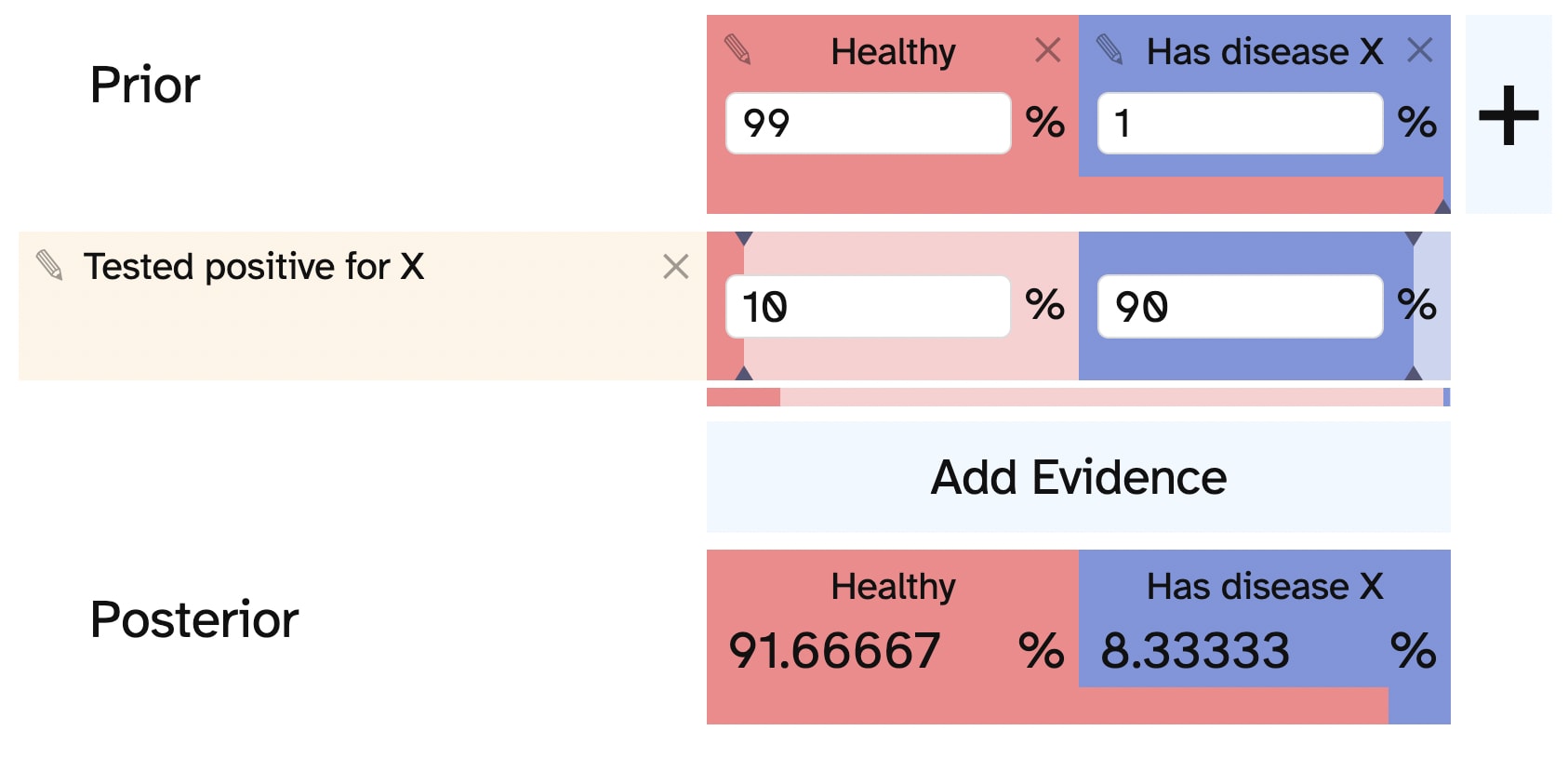I made a simple online calculator for doing elementary hypothesis testing!

I was disappointed that an intuitive and easy-to-use app for using bayes' theorem apparently did not exist, so I decided to make it. My goal was to make something that:
- Helped people correctly and quickly evaluate the effect of evidence while comparing hypotheses.
- Was easy enough for someone who didn't know math to use.
- And which also helped show what the math was doing in an intuitive way, so that you didn't have to trust math you didn't understand.
- Felt good enough to use that it would actually be used.
- Could be used to share simple models of things in a way that would help people have more productive discussions, and promote shared model building.
Hopefully I've at least made substantial progress on these goals, and I'd really appreciate feedback on ways in which it falls short! This includes even minor interface or design issues. You can leave feedback as a comment here, or on the issues page.
I'd also be really happy to see people share examples they've made in the comments!
Thanks for the feedback, I'm really happy to hear that you already have uses for it!
You're right about needing examples; I'm thinking I'll add a tutorial that walks someone completely unfamiliar with Bayes' theorem through what it means and how it works, with lots of examples. That will take a while to design and write though.
I'm curious to know if other people felt the same way "How to use" part. I'm reluctant to make it more attention grabbing, because I want it to feel unobtrusive. My current thinking is that the main interface will catch the user's attention first, and if that's not clear they'll look at the wall of text to the right.
Instead of a wizard, I was thinking of adding a feature that explains what a specific component means when the user is hovering over it. Does that seem like it would address the issue adequately? I don't like wizards because I feel like they get in the way, but maybe that's an unusual preference.